
Gwanghwamun Square: The Heart of Seoul's Historical Legacy
Discover Gwanghwamun Square, a cultural landmark in Seoul where history meets modernity, surrounded by stunning architecture and vibrant public life.
Gwanghwamun Square is a stunning historical landmark in Seoul, serving as a vibrant symbol of the city’s rich heritage and modern spirit. Nestled at the foot of Gyeongbokgung Palace, this expansive public square invites visitors to explore its monuments, gardens, and the serene atmosphere that perfectly blends history with contemporary life.
A brief summary to Gwanghwamun Square
- 172 Sejong-daero, Jongno District, Seoul, 03154, KR
- +822-2133-7732
- Visit website
- Monday 12 am-12 am
- Tuesday 12 am-12 am
- Wednesday 12 am-12 am
- Thursday 12 am-12 am
- Friday 12 am-12 am
- Saturday 12 am-12 am
- Sunday 12 am-12 am
Local tips
- Visit early in the morning or late afternoon to avoid crowds and enjoy a more tranquil experience.
- Check the schedule for cultural events or performances happening in the square during your visit.
- Don't forget to explore the nearby Gyeongbokgung Palace for a deeper insight into Korea's royal history.
- Bring a camera to capture the stunning architecture and beautiful landscapes of the square.
- Try local street food from vendors around the square for a taste of authentic Korean cuisine.
Getting There
-
Subway
Take Line 5 (the light green line) and get off at Gwanghwamun Station (Exit 2). After exiting the station, walk straight for about 200 meters until you reach the large intersection at Sejong-daero. Gwanghwamun Square will be directly ahead of you.
-
Bus
You can take bus numbers 102, 171, 272, or 601 to the Gwanghwamun Square stop. Once you get off, you'll be right at the square. Follow the signs to the square as you exit the bus.
-
Walking
If you are already in the vicinity of Jongno, simply head towards Sejong-daero. Gwanghwamun Square is located at 172 Sejong-daero. Look for the large statues and the impressive view of Gyeongbokgung Palace behind it.
-
Taxi
If you prefer a taxi, simply tell the driver 'Gwanghwamun Square' or show them the address '172 Sejong-daero, Jongno District'. Taxis are plentiful in Seoul, and this is a well-known location, so they will know where to take you.
Discover more about Gwanghwamun Square
Iconic landmarks you can’t miss
Bigag
0.2 km
Explore Bigag in Jongno District, a vibrant blend of cultural heritage and modernity in the heart of Seoul, where every corner tells a story.

Jongno in Joseon Dynasty Well
0.4 km
Explore the Jongno in Joseon Dynasty Well, a historical landmark in Seoul that unveils Korea's rich heritage and offers a serene escape in the urban landscape.

Heungnyemun Gate
0.5 km
Explore Heungnyemun Gate, a beautiful historical landmark in Seoul, and immerse yourself in the rich heritage of Korea's Joseon Dynasty.

Hanok-gil (Insadong-gil)
0.6 km
Discover the cultural richness and architectural beauty of Hanok-gil in Insadong, the heart of traditional Seoul's art and history.

Seoul City Hall
0.7 km
Discover the architectural beauty and cultural significance of Seoul City Hall, a centerpiece of governance and public engagement in South Korea's vibrant capital.

Road of Emperor Gojong
0.7 km
Explore Seoul's Road of Emperor Gojong, a historic pathway that beautifully blends the past with the present amidst stunning architecture and lush gardens.

Jeonggwanheon
0.7 km
Explore Jeonggwanheon, a historical landmark in Seoul, where traditional elegance meets serene gardens, offering a glimpse into Korea's royal past.

Seoul Cheonggyecheon Ruins
0.7 km
Explore the Cheonggyecheon Ruins in Seoul, a historical site where ancient culture meets urban beauty, ideal for history lovers and urban explorers alike.

Geunjeongjeon
0.7 km
Discover the elegance of Geunjeongjeon, a cultural landmark in Seoul's Gyeongbokgung Palace, showcasing Korea's royal history and architectural beauty.

Insadong-gil
0.7 km
Discover the cultural heart of Seoul at Insadong-gil, where traditional arts, crafts, and culinary delights await travelers in a vibrant atmosphere.

Insadong-gil Street
0.7 km
Explore the vibrant Insadong-gil Street, where tradition meets art in the heart of Seoul, offering unique crafts, delicious cuisine, and rich culture.

Seokjojeon (Korean Empire History Museum)
0.7 km
Explore the stunning architecture and rich history of Seokjojeon, a captivating museum dedicated to the Korean Empire's heritage in Seoul.

Deoksugung Palace
0.7 km
Experience the rich history and stunning architecture of Deoksugung Palace in Seoul, a cultural gem blending tradition and beauty.
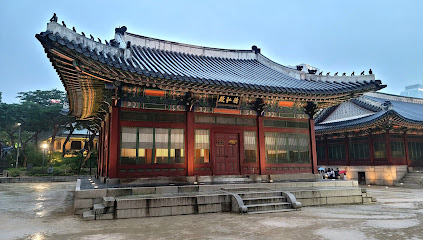
Deoksugung Palace Jungmyeongjeon
0.8 km
Uncover the historical splendor of Deoksugung Palace Jungmyeongjeon, a captivating blend of Korean tradition and Western architecture in Seoul.
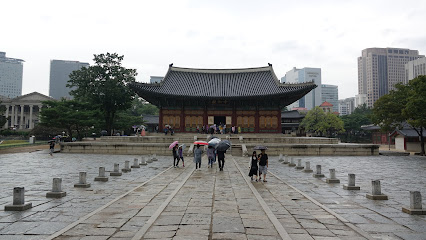
Yeongchumun (West Gate)
0.8 km
Discover the historical grandeur of Yeongchumun, the West Gate of Gyeongbokgung Palace, a must-see landmark in Seoul's rich cultural tapestry.

Unmissable attractions to see
Statue of King Sejong the Great
0.1 km
Discover the rich history of Korea at the Statue of King Sejong the Great, a magnificent tribute to the beloved monarch and creator of the Korean alphabet.
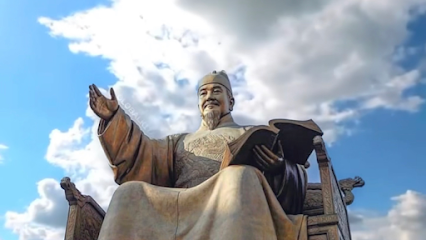
Sejong Center for the Performing Arts
0.1 km
Experience the cultural heartbeat of Seoul at the Sejong Center for the Performing Arts, a hub for art, music, and unforgettable performances.

The Story of King Sejong and 'Chungmugong' Admiral Yi
0.1 km
Explore the dynamic history of King Sejong the Great and Admiral Yi Sun-sin at this captivating exhibit in the heart of Seoul.

Statue of Admiral Yi Sun-sin
0.2 km
Discover the spirit of Korea at the iconic Statue of Admiral Yi Sun-sin, a cultural landmark celebrating the nation's naval hero.

Sejong-ro Park
0.2 km
Experience the serene beauty of Sejong-ro Park in Seoul, an urban oasis blending nature, culture, and tranquility for every traveler.

세종문화회관 S씨어터
0.2 km
Experience the vibrant world of performing arts at S Theater, a cultural gem in the heart of Seoul's Sejong Center.

National Museum of Korean Contemporary History
0.2 km
Discover Korea's modern heritage at the National Museum of Korean Contemporary History, where history comes alive through captivating exhibits and engaging narratives.

40th Anniversary Monument of Gojong’s Enthronement
0.2 km
Discover the rich history and serene beauty of the 40th Anniversary Monument of Gojong’s Enthronement in the heart of Seoul.
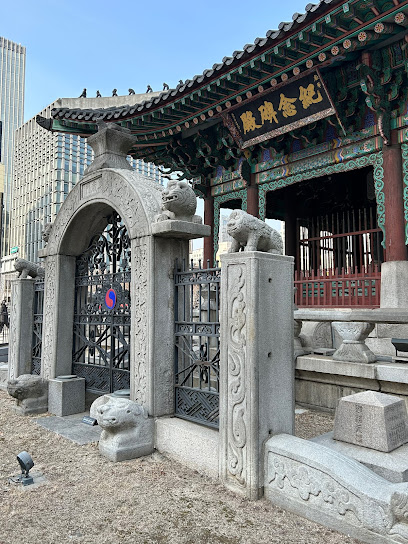
Gwanghwamun Hanok House
0.3 km
Discover the flavors of Korea in a traditional Hanok setting at Gwanghwamun Hanok House, an exceptional dining experience in Seoul.

신문박물관 PRESSEUM
0.3 km
Explore the evolution of journalism at PRESSEUM, Seoul's premier museum dedicated to the history of newspapers and media.

Ilmin Museum of Art
0.3 km
Immerse yourself in contemporary art at the Ilmin Museum of Art, a cultural landmark in the heart of Seoul showcasing vibrant exhibitions and creative workshops.

DongHwa Dutyfree
0.3 km
Experience the best of duty-free shopping at DongHwa Dutyfree in Seoul, where luxury meets local culture.

Gwanghwamun Woldae (Elevated Platform)
0.4 km
Discover the historical essence of Seoul at Gwanghwamun Woldae, where tradition and modernity converge in a picturesque setting.

Cheonggye Plaza
0.4 km
Discover the serene beauty of Cheonggye Plaza, a vibrant urban oasis in Seoul, perfect for relaxation and cultural experiences amidst the city's hustle.

Gwanghwamun Gate
0.4 km
Explore the grandeur of Gwanghwamun Gate, a historical landmark that embodies Seoul's rich cultural heritage and architectural beauty.
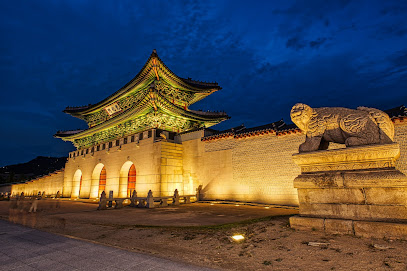
Essential places to dine
The Market Kitchen
0.2 km
Explore culinary excellence at The Market Kitchen in Seoul with an expansive buffet featuring global flavors and local specialties.

Akira Back
0.2 km
Experience culinary artistry at Akira Back in Seoul – where Canadian flavors meet Korean inspirations in a fine dining setting.

Dugahun
0.6 km
Experience authentic Italian flavors at Dugahun in Jongno District, Seoul – where culinary excellence meets vibrant atmosphere.

Korean Folk Village
0.6 km
Discover Korea's rich heritage at Korean Folk Village – an open-air museum showcasing traditional life with performances, crafts, and delicious cuisine.
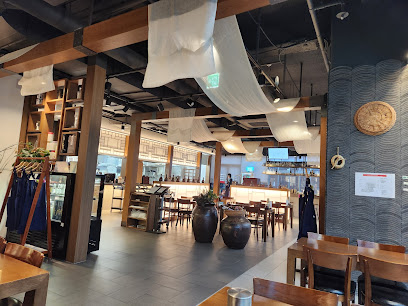
Sejong Village Food Street
0.6 km
Discover the rich flavors of Korea at Sejong Village Food Street – a culinary haven in the heart of Seoul's historic Jongno District.

Insadong Geujip
0.7 km
Experience authentic Korean flavors at Insadong Geujip - where tradition meets culinary excellence in Seoul's historic district.

PyeongYang Gogitjip
0.8 km
Experience authentic Korean BBQ at PyeongYang Gogitjip in Jongno District, where flavors meet tradition in every grilled bite.

Ha-Yeon Korean Cuisine Restaurant
0.8 km
Savor authentic Korean traditional full-course meals at Ha-Yeon in Jongno-gu, where every dish tells a story.

Tteok Salon Insadong
0.8 km
Experience authentic Korean rice cakes at Tteok Salon Insadong - a culinary gem in Seoul's historic Insadong district.

Yangbandaek
0.8 km
Experience authentic Korean flavors at Yangbandaek in Jongno District, where traditional cuisine meets warm hospitality.

Insadong gukbap
0.8 km
Experience authentic Korean gukbap at Insadong Gukbap in Seoul - where tradition meets flavor in every bowl.

Doma Insadong
0.8 km
Discover authentic Korean flavors at Doma Insadong in Seoul's historic Insadong district – a perfect blend of tradition and taste.

Sanchon
0.8 km
Discover authentic Korean vegetarian cuisine at Sanchon in Seoul's historic Insadong district—an unforgettable dining experience steeped in tradition.

Tteulag
0.8 km
Discover Tteulag: A Culinary Haven in Seoul's Insadong District Offering Authentic Korean Flavors and Warm Hospitality.

Korean Restaurant Doore
0.9 km
Experience the essence of traditional Korean dining at Doore - where every dish tells a story.

Markets, malls and hidden boutiques
YG Place Insa Branch
0.6 km
Explore the vibrant world of K-pop at YG Place Insa Branch, Seoul's premier music store, offering exclusive merchandise and a taste of Korean music culture.

Etro Boutique
0.7 km
Discover the elegance of Italian fashion with unique prints and luxurious fabrics at Etro Boutique in Seoul, a must-visit for style enthusiasts.

세령 (Korean HandMade Highclass Traditional Accessory)
0.7 km
Discover 세령: Your Destination for Exquisite Handmade Traditional Accessories in Seoul, Celebrating Korean Artistry and Culture.

Kukje Embroidery
0.7 km
Discover the artistry of Korean embroidery at Kukje Embroidery, a unique gift shop in the heart of Seoul's Insa-dong district.

Moony Gongbang Music Box (무늬공방 도자기 오르골)
0.7 km
Discover the magic of handcrafted music boxes at Moony Gongbang in Seoul's Jongno District, where melodies and memories intertwine beautifully.

Ssamziegil
0.7 km
Explore the artistic heart of Seoul at Ssamziegil, where traditional crafts meet modern shopping in a vibrant cultural hub.

Korean National Souvenir Center
0.7 km
Explore the Korean National Souvenir Center for unique handcrafted gifts and authentic cultural experiences in the heart of Seoul.

Insadong Vintage
0.8 km
Explore the rich tapestry of fashion history at Insadong Vintage, where each unique piece brings a story from the past to your wardrobe.

Yeon
0.8 km
Discover Yeon, a charming gift shop in Seoul, offering unique handmade products that reflect Korea's rich cultural heritage.

인사1길
0.8 km
Explore the charm of Korean craftsmanship at Insa1-gil, a unique home goods store in Seoul's historic Insa-dong district.

AEOL SSIGU MADANG
0.8 km
Explore vintage treasures at AEOL SSIGU MADANG in the heart of Seoul's Insa-dong, where retro fashion meets a vibrant cultural scene.

Damul
0.8 km
Explore Damul in Insa-dong, where traditional Korean fashion meets contemporary style in a vibrant shopping experience.

Insadong Bells and Wind Chimes Shop
0.9 km
Explore the enchanting Insadong Bells and Wind Chimes Shop in Seoul, a treasure trove of handcrafted gifts that capture the spirit of Korean culture.

e-바다몰
0.9 km
Discover unique home goods and essentials at e-바다몰, where quality meets style for your living spaces.

Korea Traditional Souvenir Center
0.9 km
Explore authentic Korean culture at the Korea Traditional Souvenir Center, home to unique handcrafted treasures and traditional memorabilia.

Essential bars & hidden hideouts
찰스 H Charles H.
0.2 km
Discover the perfect blend of elegance and modernity at Charles H. in Seoul, a sophisticated bar and dining experience.

Tender Bar
0.6 km
Experience Seoul's nightlife at Tender Bar, a cocktail haven offering expertly crafted drinks and a vibrant atmosphere in Jongno District.

Cobbler
0.6 km
Experience the art of mixology at Cobbler, a premier cocktail bar in Seoul's Jongno District, where creativity and flavor intertwine.

I Love Pub
0.6 km
Experience the vibrant nightlife at I Love Pub in Jung-gu, Seoul, where friendly service meets a lively atmosphere and delicious drinks.

OB's Cabin
0.7 km
Experience the vibrant nightlife of Seoul at OB's Cabin, a live music bar where local talent shines in an intimate setting.

마당쇠호프
0.7 km
Discover the local charm of Seoul at 마당쇠호프, a popular bar in Insa-dong offering delicious drinks and a vibrant social atmosphere.

Tongkeun Imo
0.7 km
Discover the lively essence of Seoul's nightlife at Tongkeun Imo, a cozy bar in Insa-dong offering unique local drinks and a welcoming atmosphere.
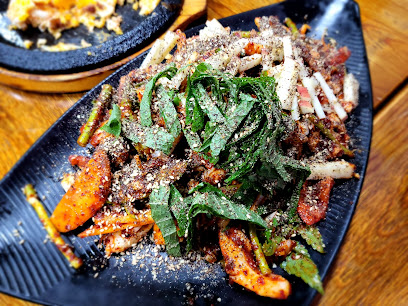
Seochon Dokkaebi
0.7 km
Discover Seochon Dokkaebi, a vibrant bar in Seoul that blends traditional Korean culture with modern nightlife, perfect for an unforgettable experience.

Ghiwon22
0.7 km
Discover Ghiwon22: A chic cocktail bar in Myeong-dong, blending local Korean flavors with innovative drinks in a vibrant atmosphere.

Tou
0.8 km
Experience the authentic taste of Korea at Tou, a Korean rice wine pub in Jongno District, where culture and flavor come alive.

Jongnoilbeonzi
0.8 km
Discover the vibrant nightlife of Jongnoilbeonzi, a perfect bar to unwind in the heart of Seoul's cultural district, Insa-dong.

Insadong Nogari
0.8 km
Experience the vibrant nightlife of Seoul at Insadong Nogari, a traditional bar offering delicious drinks and a welcoming atmosphere in the heart of Insadong.

The Flair Bar
0.8 km
Discover The Flair Bar in Seoul - a lively nightlife destination offering innovative cocktails, a vibrant atmosphere, and a taste of local culture.

레벤호프
0.8 km
Immerse yourself in Seoul's nightlife at 레벤호프, where traditional charm meets modern mixology in the heart of Insa-dong.

Pierres Bar
0.9 km
Experience the luxury of Pierres Bar in Seoul, where exquisite cocktails meet breathtaking skyline views in an elegant setting.




